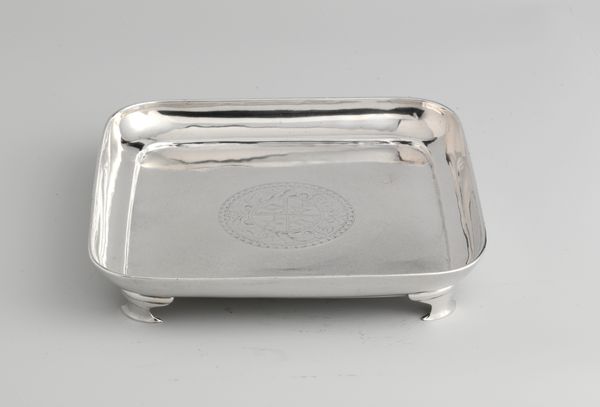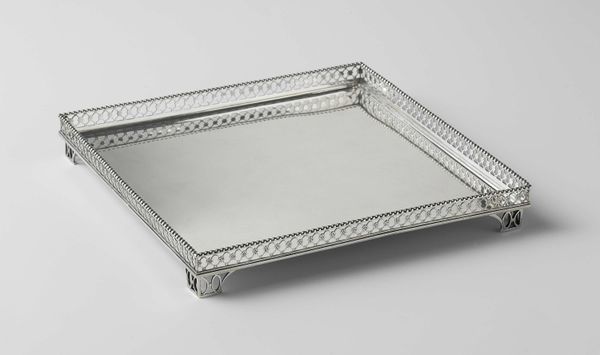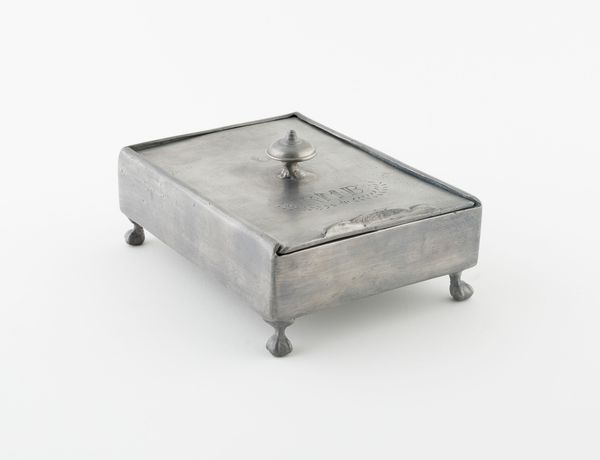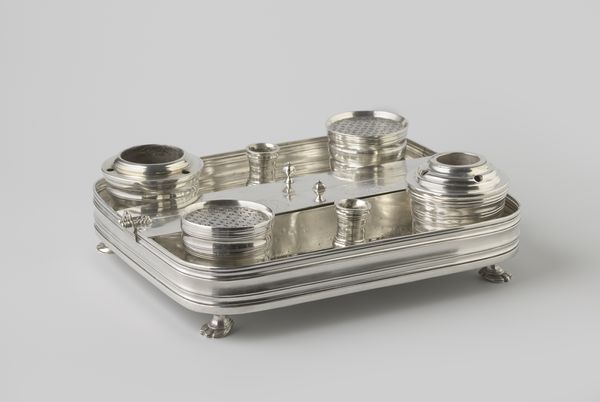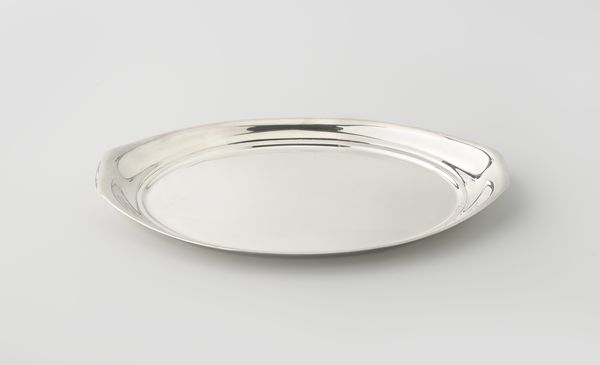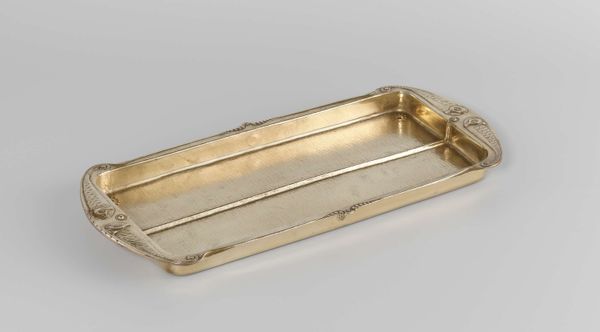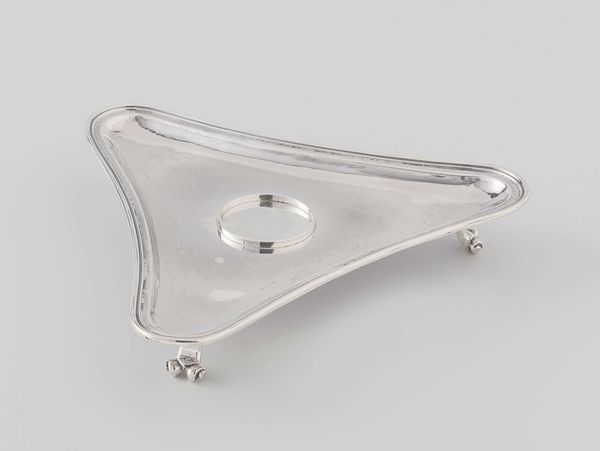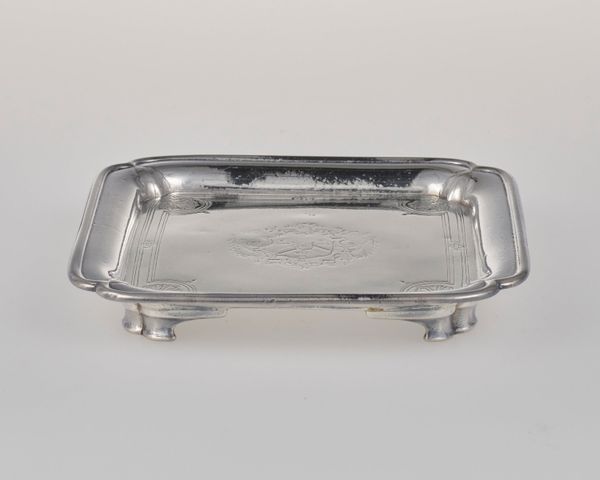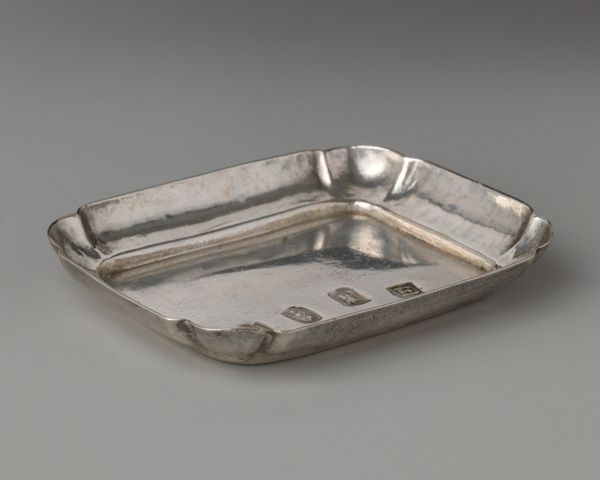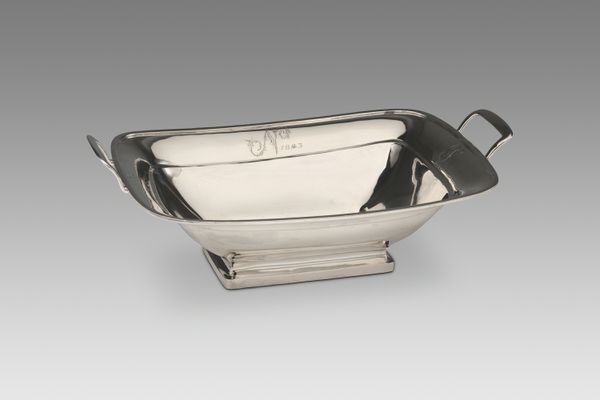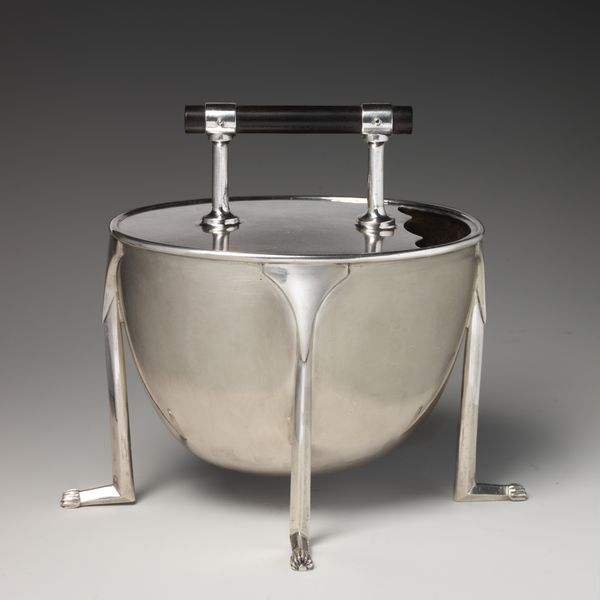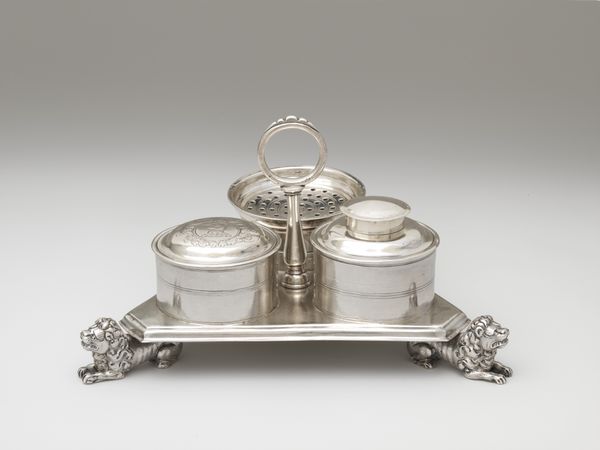
silver, metal
#
silver
#
baroque
#
metal
#
decorative-art
Dimensions: length 30.5 cm, width 25 cm, height 6 cm, weight 1668 gr
Copyright: Rijks Museum: Open Domain
Editor: Here we have a Dutch Baroque silver inkstand made between 1725 and 1750 by Jurriaan van Kalker. Its geometric form contrasts with the ornate feet. It feels… contained, somehow. What do you make of it? Curator: This inkstand, made of precious metal, reveals much about the priorities of the Dutch East India Company's elite. The very material speaks of global exploitation; the silver likely extracted through colonial labor. It demands we look at decorative arts as enmeshed in broader power dynamics. Editor: Power dynamics, how so? Curator: Consider its intended function. Writing was power. Who had access to it? Who was being written about, and from what perspective? Objects like these weren't merely decorative; they were tools for solidifying colonial authority and shaping narratives. Who benefitted from those narratives and who was disadvantaged? Editor: I see. So it's not just about aesthetics, but about access and representation? The wealth is used to produce these tools for… official communication. Curator: Exactly. And the “Batavia” referenced in the name isn't accidental. It's a direct link to the violent colonial history of the Dutch East India Company. An attempt to validate this project in the Dutch Golden age by linking the homeland with the colonized land through symbols and objects, embedding the inkstand itself into this history of exploitation. Does it feel differently now? Editor: It does. Knowing the backstory gives this decorative object a very different, almost unsettling character. It goes from seeming austere to screaming out wealth extracted from someplace far away. Curator: It’s a stark reminder that aesthetics and ethics are intertwined.
Comments
No comments
Be the first to comment and join the conversation on the ultimate creative platform.
